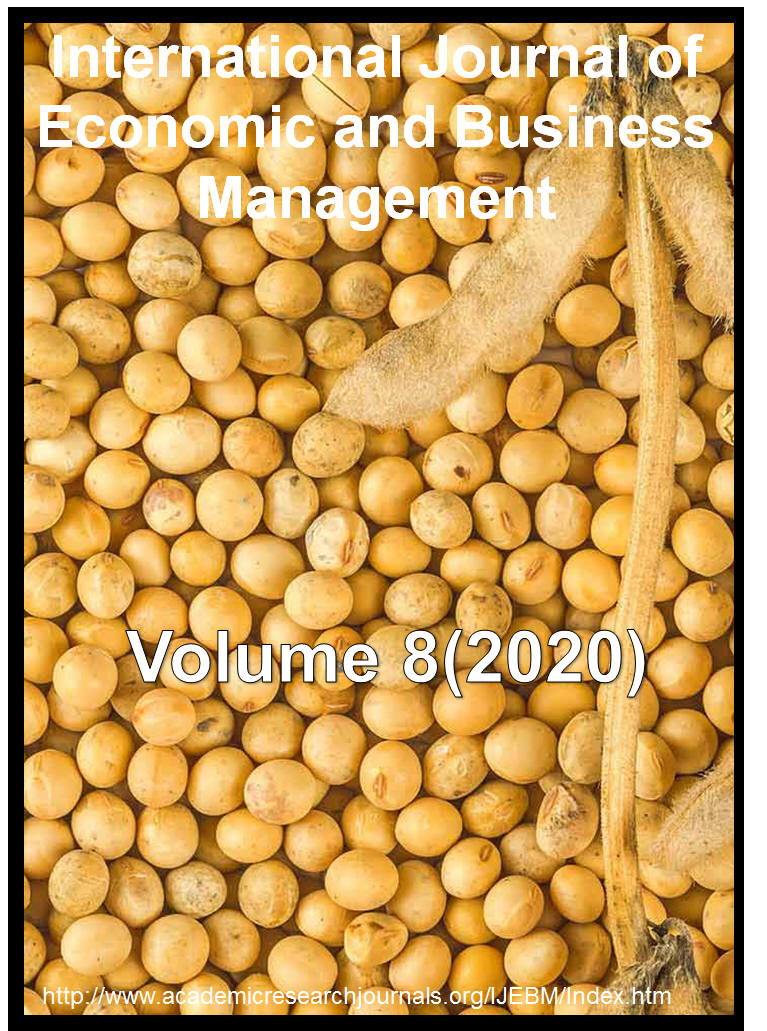|
ISSN: 2384-6151 |
International
Journal of Economic and Business Management |
|||||||||||||||||||
|
Vol. 8(1), pp. 1-10, January, 2020. ISSN: 2384-6151 DOI: 10.14662/IJEBM2019.200
Full Length Research
Soybean (Glycine max (L.) Merril) Value Chain Analysis in case of Jimma Zone, Southwestern Ethiopia
Kumilachew Achamyelh1, Zekariyas Shumeta2, Abush Tesfaye3 and Mesfin Hailemariam1
Ethiopia Agricultural Research Institute, Jimma Agricultural Research Centre, Jimma University College of Agriculture and Veterinary Medicine, Associate Professor, 3International Institute of Tropical Agriculture, PMB, Nigeria. Corresponding author: email: jrmesfin@gmail.com
Accepted 11 November 2019
This study
was conducted at Tiro Afeta district of Jimma zone with the objectives
of analyzing and mapping the value chain and identifying the
determinants of soybean supply to the market in the study area.
Tiro-Afeta district was selected purposively due to its potential in
soybean production and marketing. There are 17 rural kebeles
administrations in the Tiro-Afeta district. From these rural kebele
eight kebeles were selected purposively based on current production
level of soybean and finally, four kebeles were selected randomly.
Semi-structured questioner was developed and used to collect data from
input suppliers, collectors, local retailers, local wholesalers,
national wholesalers, national retailers, processors, exporters and
enablers or supporters who were purposively selected. Both primary and
secondary source data were considered for the analysis, value chain map
and econometric methods were used to analyze the data. The result of the
study showed that the main value chain actors were input suppliers,
soybean producers, wholesalers, retailers, collectors, processors,
exporters and consumers. The average amount of soybean supplied to the
market by producers was 4.47 quintals with a minimum amount of 2.48
quintals and maximum amount of 5.73 quintals. Compared to farmers,
traders took above 65.8% of the total profit margin. The result of
Ordinary Least Squares model showed that quantity of soybean produced,
sex of the household head, and distance to the nearest market, frequency
of agricultural extension visits and cooperative membership positively
and significantly affected soybean market supply. Based on the findings,
the study recommends introduction of soybean improved varieties and
sustainable supply of bio-fertilizer and increase of credit, rural roads
and agricultural extension services. Increase the access of cooperatives
and intensify cooperative to collect soybean from the farmers could
affect the farmers’ profit margin positively by eliminating unwanted
chain actors from the chain. Thus, huge emphasis should be given to
cooperative development on the study area.
Cite This Article As:
Kumilachew A., Zekariyas S., Abush T., Mesfin H (2020). SOYBEAN (Glycine
max (L.) Merril) VALUE CHAIN ANALYSIS IN CASE OF JIMMA ZONE,
SOUTHWESTERN ETHIOPIA. Inter. J. Econ. Bus. Manage. 8(1): 1-10 |
||||||||||||||||||||
|
|
|||||||||||||||||||
